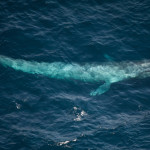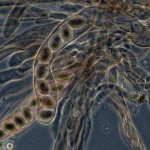
I don’t study hydrothermal vents. I rather enjoy the deep muddy ooze, and its organisms, that comprise much of the earth’s surface. Not that I don’t like vents, I just like the soft bottoms better. I have been often asked what I think the coolest thing about the deep sea, marine biology…and hydrothermal vents is. I guess people expect some Cousteau-esque answer where I describe being in a wet suit riding at top speed on a Zodiac chasing some charismatic vertebrate where I am poised to jump on its back with a satellite tag. Needless to say people are often disappointed with my answers.
For me the coolest thing about hydrothermal vents and methane seeps has been, and always will be, how they have forced us to rethink the requirements of life. At one time, the prevalent attitude was that life required sunlight, a crazy notion in light of these deep-sea habitats. Indeed, vent organisms challenge the concept that sunlight is even needed for photosynthesis. Vent and seep organisms, from microbes to mollusks, have discovered ways to acquire food where none existed by utilizing brilliant, and often novel, biochemical pathways. They are adapted to extreme temperatures and toxicity that kills 98% of other organisms.

This new view thus expands the range of environmental conditions that we believe life can flourish in. With this new understanding about the adaptability of life, our perception of planets and the life they might harbor changes. Perhaps our new view implies that even when conditions wouldn’t permit life from our planet to exist, it doesn’t preclude life. What started me thinking about this view was a new study in Science by Lorenz and colleagues suggesting that a deep ocean lies on Saturn’s moon Titan. Other celestial bodies in our solar system the moons of Jupiter also may possess deep oceans. By deep, we don’t mean there is hundreds or thousands of meters of water (although there could be), but rather the oceans are buried below deep layers of ices. On Titan this ice shell over the moon and its oceans is hypothesized to be much greater than 70km.
In the Science Daily News one of the coauthors of the recent study points that Titan’s oceans possess “poisonous ammonia–presumably lingering from Titan’s formation–and a likely dearth of chemical nutrients in the sea [would lead to] very simple, primitive life…and there might not be much of it.” Perhaps now that I am recently another year older I am becoming less cynical. However, I like to think the lesson from vents and seeps is that life can flourish even in the most toxic and harshest of environmental soups.





